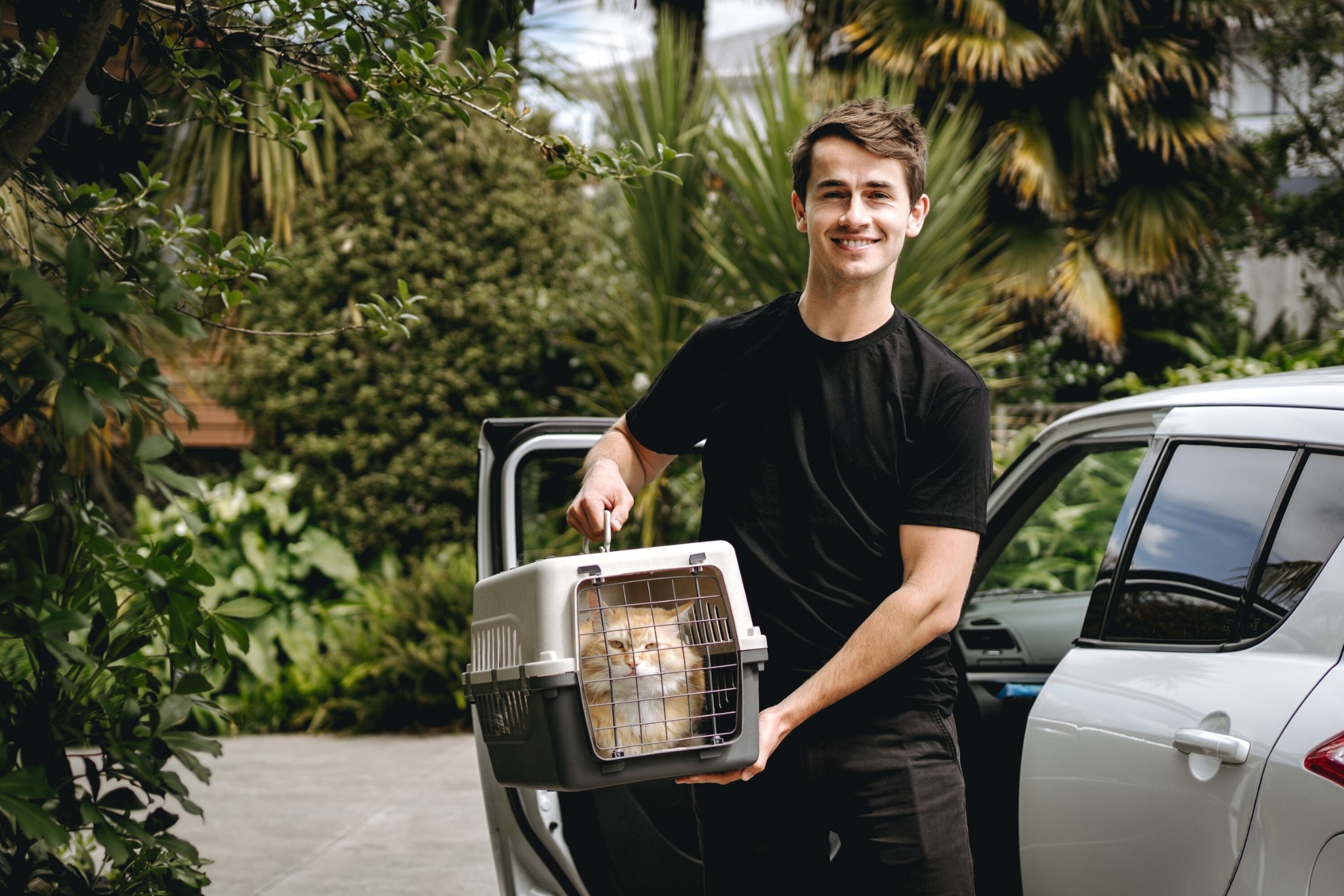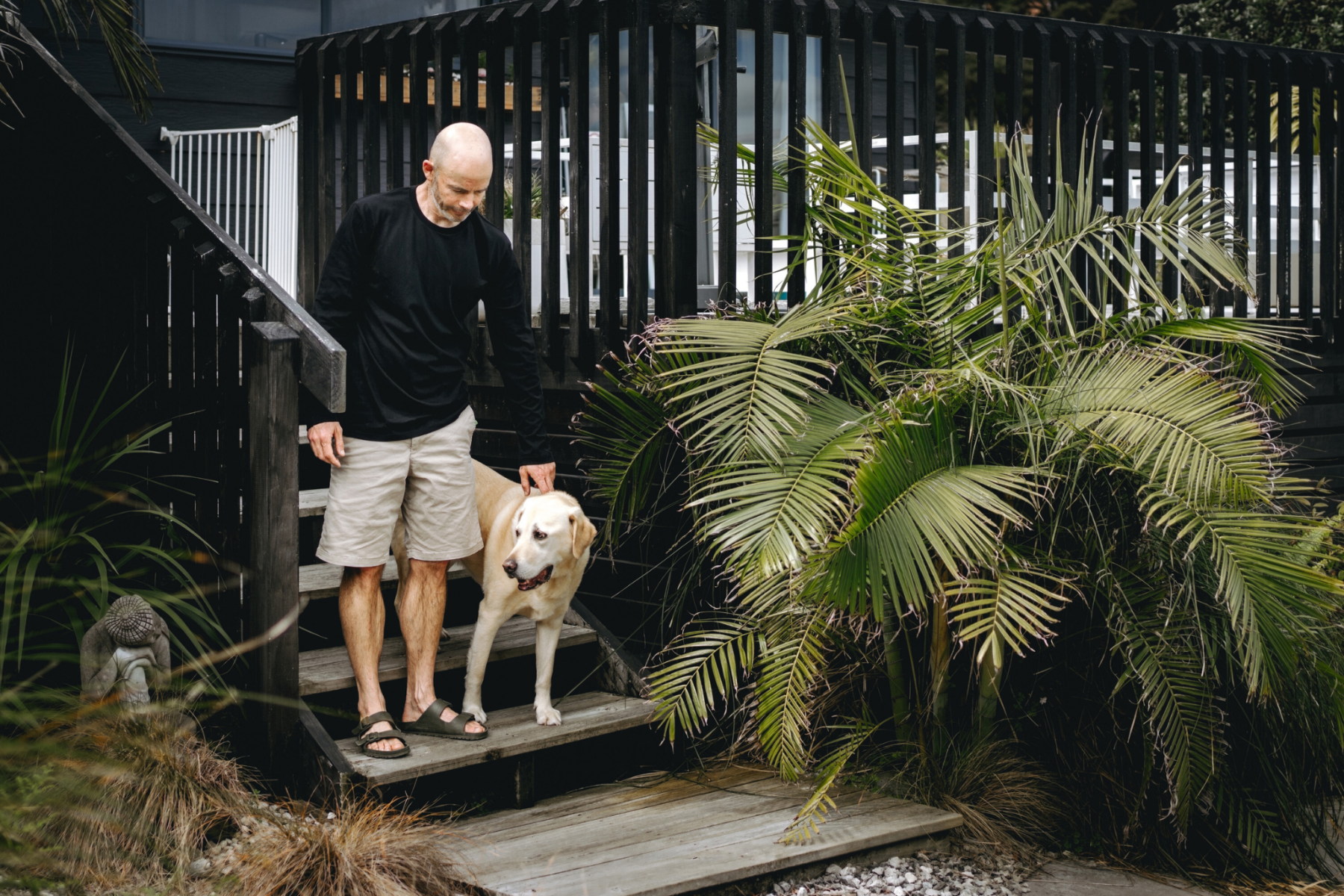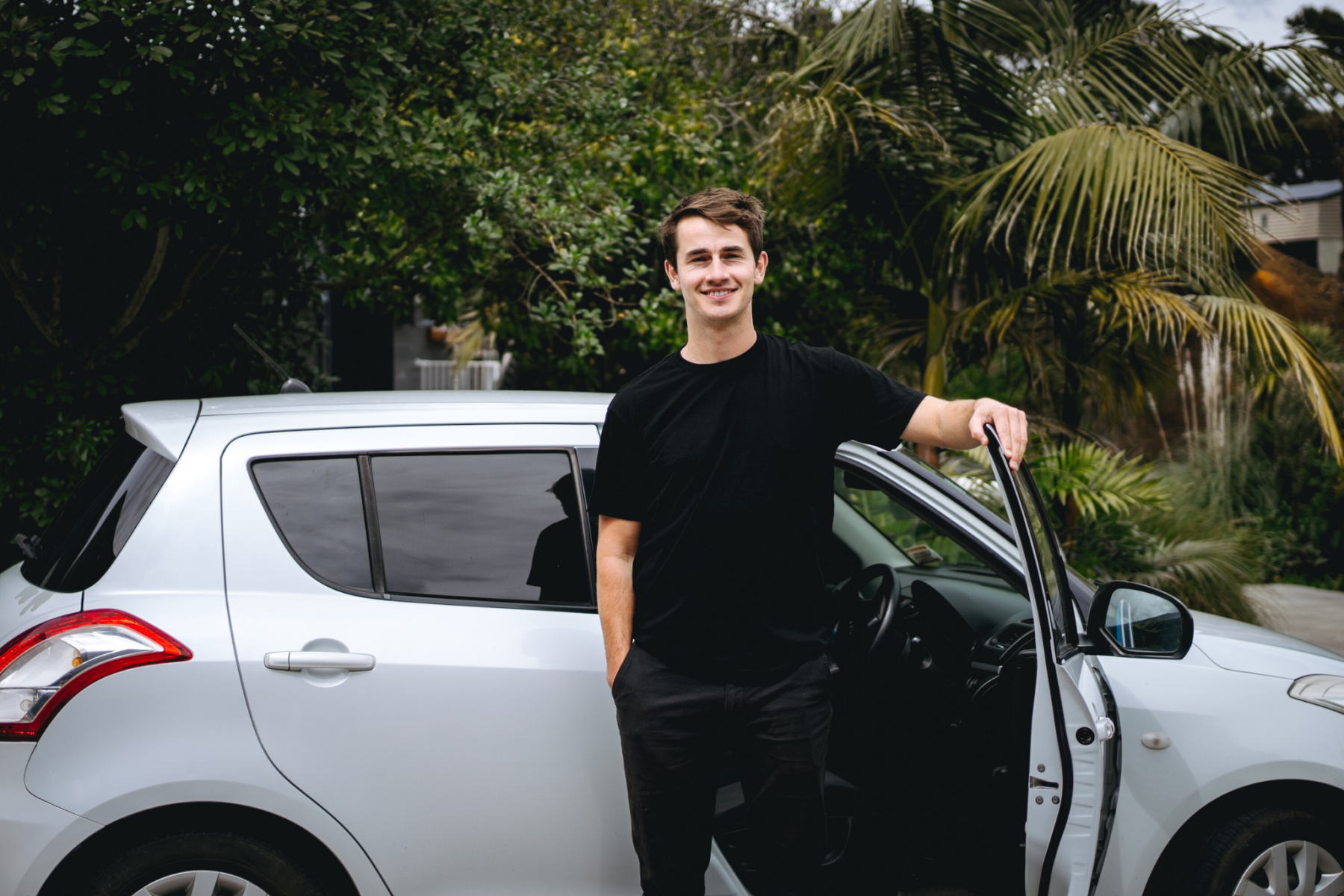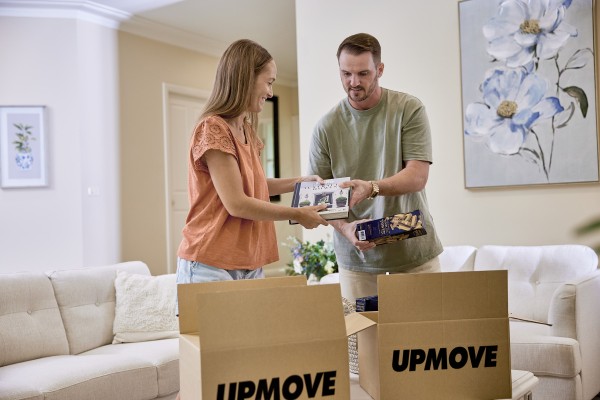Flying with pets in Australia

For many pet owners, their furry friends are constant companions, eagerly waiting by the door for walks, or jumping in the car to join in on every adventure. While sharing life with a pet is immensely rewarding, travelling long-distances, whether for a new home or holiday, can present challenges.
Fortunately, many airlines now offer pet flights, making it easier to explore new destinations together.
Here’s our complete guide on flying with pets covering:
Which pets are allowed to fly in Australia?
There’s no one-size-fits-all approach to flying with pets. Generally, cats, dogs, and small birds are allowed on pet flights, but the rules for less common household pets, like snakes, lizards, rats, and hamsters, can be somewhat ambiguous. If in doubt, check with your airline directly.
Can pets travel on international flights?
If you’re flying into Australia from another country the restrictions are even stricter. Currently only dogs, cats, rabbits, horses and selected species of birds from approved countries may be imported, and lengthy quarantine periods usually apply.
What are the requirements and restrictions for pets on domestic flights?
Restrictions and requirements for flying with pets can vary based on the airline, as well as your pet's species, breed, age, size, and health. For the most accurate and up-to-date information, it's best to check directly with your airline. In the meantime, here are some general guidelines to consider.
General restrictions
Pets must:
-
Be over eight weeks old (this is due to possible dehydration while travelling).
-
Be in good health.
-
Not exceed 65kgs (including the container).
-
Not be unduly aggressive.
-
Be transported in a container which complies with the airline specs and structure.
-
Be treated for the Hydatids Tapeworm prior to arrival if travelling to Tasmania.
-
Be up to date with necessary vaccinations requirements (particularly rabies).
Crate restrictions
Airlines have specific size requirements for pet crates to ensure that animals can travel comfortably, allowing enough space for them to stand, sit, and turn around. Usually, the cost of the crate is not included in the pet flight booking, so it's your responsibility to arrange a suitable crate that complies with airline regulations.
For more details on crate requirements, including guidelines for transporting multiple pets in the same crate, check the IATA website.
Veterinary certificates
You may need a veterinary certificate if your pet is:
-
Pregnant or has given birth within 48 hours of the planned departure time
-
Over 12 years of age
-
Between 8 and 12 weeks old
-
Sick, injured or recovering from surgery
-
Sedated for travel
What are the restricted dog breeds in Australia?

The following dog breeds (including cross-breeds) are prohibited for import into Australia and therefore cannot travel on flights:
-
Fila Brasilerio
-
Japanese Tosa
-
Dogo Argentino
-
American Pit Bull and other Pit Bull Breeds
-
Perro de Presa Canario (Presa Canario)
-
Czechoslovakian wolfdog or Czechoslovakian Vlcak
-
Saarloos wolfdog or Saarloos wolfhound
-
Lupo Italiano or Italian wolfdog
-
Kunming wolfdog or Kunming dog.
Which airlines allow pets on planes in Australia?
Currently, Qantas and Virgin are the only domestic airlines that consistently permit pets to fly in their cargo area. REX allows pets as checked baggage on select flights, while Jetstar does not allow pets at all.
Virgin Australia pet flights
In March 2024, Virgin Australia announced plans to introduce a service allowing small cats and dogs to travel in the cabin on select domestic flights. The initiative, which is set to launch within 12 months, is waiting for regulatory approval.
As of January 2025, the airline is preparing to trial this service on the Melbourne-Sydney route, making it the first major Australian carrier to allow small pets in the cabin.
-
The service will be limited to small cats and dogs on specific domestic routes.
-
Pets will be restricted to a limited number of designated rows and will not be allowed to roam freely or sit on laps.
-
Pets must also be carried in a Virgin Australia-approved pet carrier under the seat in front of the owner for the duration of the flight.
How much does it cost to fly with your pet?
Typically, your pet and its crate are considered excess baggage and are charged accordingly. The cost of flying your pet varies by airline. Here are some prices to give you an idea:
Qantas
Cost: Typically ranges from $150 to $600, depending on the destination and the size of your pet.
Details: Qantas allows pets to travel in the cargo hold. It’s essential to book your pet's flight well in advance, as spaces can fill quickly.
Virgin Australia
Cost: Generally between $150 to $500.
Details: Similar to Qantas, Virgin Australia accommodates pets in the cargo area. Reservations should be made as early as possible to secure a spot.
REX (Regional Express)
Cost: Typically around $100 to $200.
Details: REX allows pets as checked baggage on select routes, often at a more affordable rate compared to larger airlines.
Jetstar
Cost: Jetstar does not allow pets in the cabin or cargo, so travel options with this airline are limited for pet owners.
Additional costs to consider
In addition to airline fees, other costs can arise when flying with your pet:
-
Crate purchase or rental: Airlines require pets to be transported in an IATA-approved crate, which can range from $50 to $300, depending on size and quality.
-
Veterinary fees: You may need to visit a vet for a health certificate, vaccinations, or other requirements. This can cost anywhere from $50 to $150.
-
Travel insurance: Consider getting pet travel insurance, which can vary in price but typically starts around $30.
Tips for budgeting pet travel costs
-
Book early: Secure your pet’s spot as early as possible to avoid last-minute fees and ensure availability.
-
Compare airlines: Look at the costs and services offered by different airlines to find the best fit for your budget and your pet’s needs.
-
Check for promotions: Some airlines offer discounts or promotional rates for pet travel, especially during off-peak seasons.
NOTE: On most airlines, service dogs are allowed in the cabin for free.
Planning your pet’s flight
When planning your pet’s flight, you can choose to either manage the arrangements on your own or enlist the help of a reputable pet travel agency.
Planning your pet flight yourself

Start planning early
Flying with pets can be stressful, especially if you leave it to the last minute. Give yourself plenty of time to understand the rules and requirements for bringing your furry friend on board. This way, you can ensure both you and your pet are ready, and the airline has ample time to make arrangements.
Ensure your pet crate meets the requirements
Don't rely on the same carrier you use for trips to the vet. Many standard crates have vents on the lower sides, which don't comply with IATA guidelines. Your pet carrier should also have a secure water holder and a watertight base to keep your pet comfortable during the journey.
Get your documentation sorted
Make sure to add your pet to your flight booking, pay any necessary fees in advance, check your baggage allowance, and gather all required documentation for your trip.
Opt for direct flights
If you’re travelling long distances with your pet, especially internationally, it's often best to book direct flights and if this isn’t possible, consider taking a break at transfer points to give your pet a rest.
Choose early morning flights
Booking flights early in the day can help you avoid the heat, particularly during the summer months. Early flights may also be more comfortable for your pet compared to travelling in the midday heat.
Pet travel agencies
Opting for a pet travel agency means they’ll take care of every detail, whether your journey is local or international. You can select from options like door-to-door service, door-to-airport, or airport-to-airport transport. Plus, they’ll offer expert advice on how to prepare your pet for a smooth and comfortable travel experience.
Most airlines have a list of pre-approved pet travel agencies that they use for pet flights - be sure to double-check which are suitable before confirming your booking.
Pet flight checklist
There’s a lot to think about when flying with a pet, so we’ve created a handy checklist for the lead up to travel, and travel day to help you create a safe and stress-free experience.
Ensure your pet is microchipped. While most pets remain safe and sound throughout a flight, microchipping is an important safety net in the event that they get out and get lost.
Check in with the vet. Schedule a visit to the vet well in advance of your flight. Your veterinarian will conduct a health check to ensure your pet is fit for travel and can provide any required vaccinations and health certificates.
Choose the right crate. Invest in an IATA-approved travel crate that’s the appropriate size for your pet.
Pack the essentials for the trip including:
- Food and water: Bring enough food for the journey, along with a collapsible water bowl.
-
Medication: If your pet requires any medication, pack it along with instructions.
-
Comfort items: Include a favourite toy or blanket to help soothe your pet during travel.
-
Identification: Ensure your pet has a collar with an ID tag, and consider microchipping for added security.
Pre-flight exercise. On the day of travel, make sure your pet gets plenty of exercise. A long walk or play session can help burn off excess energy, making them more relaxed during the flight. This is especially important if your pet tends to be anxious or restless.
Freeze a bowl of water overnight. Some airlines allow you to provide water in the crates in the form of a frozen bowl of water, so don’t forget to prepare that the night before
Get to the airport early. Most airlines require you to get to the airport 2 hours before your flight which gives you enough time to get everything sorted out.
Give your pet a small meal 4 hours before flying. Larger meals could lead to constipation or mess during the flight.
Post flight care. Once you arrive at your destination, take your pet out to the bathroom and be patient - they will likely need some time to adjust to the new environment.
Looking for a safe and reliable pet transport service?
Flying isn’t always the best option when it comes to the physical and mental well-being of your pet. For those times you need a land-based pet transportation service, Upmove can help.
With Upmove, you can quickly and easily book the best cat and dog transport services across, find pawsome affordable and reliable services with just a few clicks.

What do our customers say?


























![Electric Bass Guitar Amplifier [90x70x35cm ; 50kgs], Electric Bass Gui... Electric Bass Guitar Amplifier [90x70x35cm ; 50kgs], Electric Bass Gui...](https://cdn.upmove.com.au/image/listing/3526991a6bdc56e645ac1b2a540b126e.jpeg)


